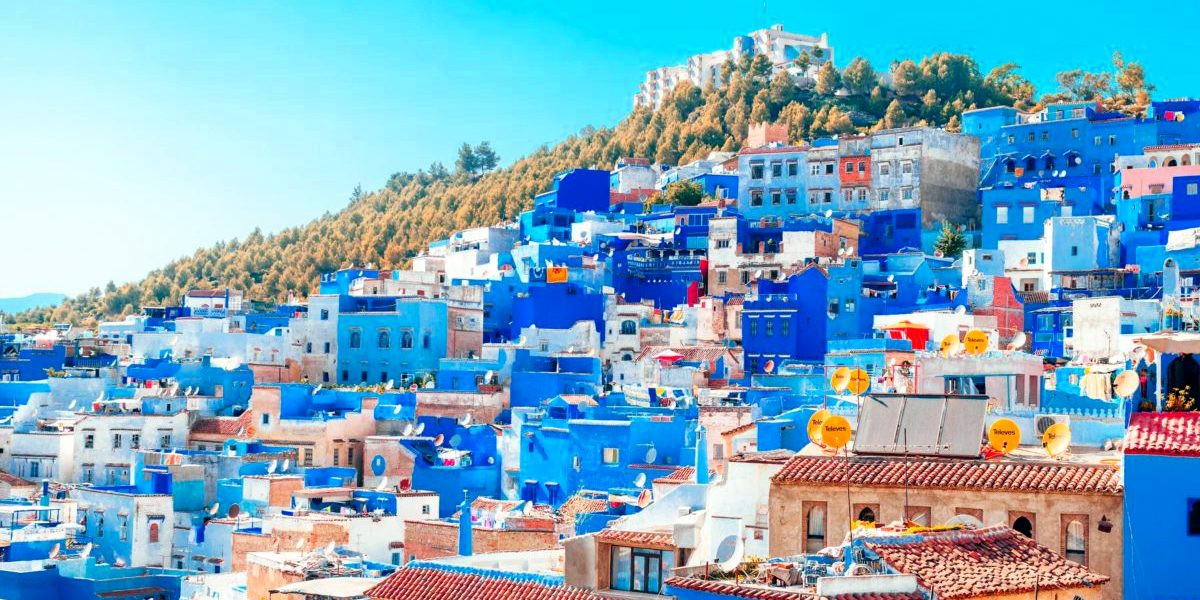Fez
Fez, often considered the cultural and spiritual heart of Morocco, is a city steeped in history and tradition. Founded in the 9th century and home to the oldest university in the world, the University of Al Quaraouiyine, Fez is a testament to the depth of Islamic scholarship and education. The city is divided into three distinct parts: Fes el-Bali (the old, walled city), Fes el-Jdid (the new city), and the Ville Nouvelle (the French-created, newest section of Fez).
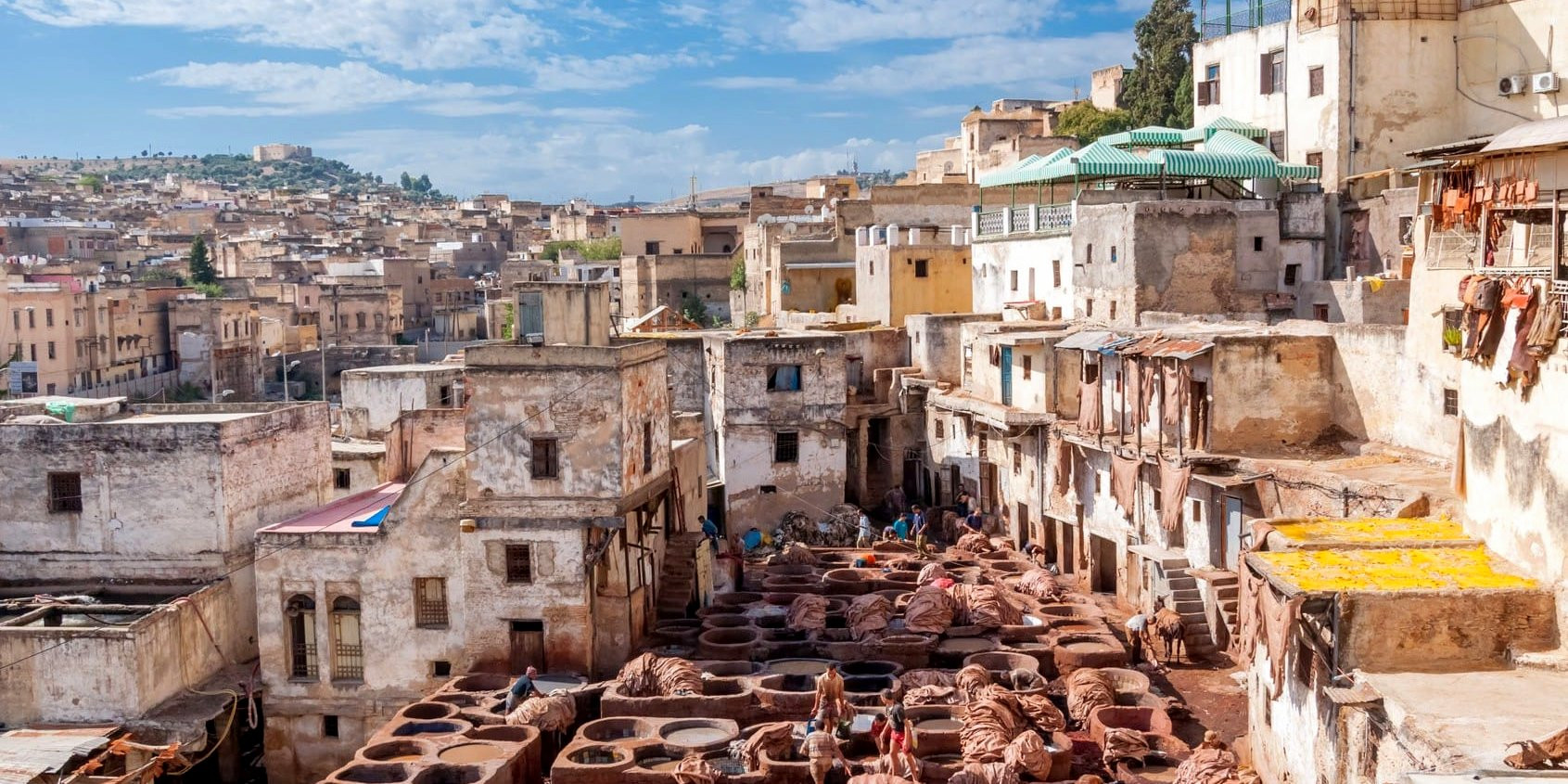
Highlights of Fez
-
Fes el-Bali: This UNESCO World Heritage site is the oldest and most famous part of Fez, known for its labyrinthine alleys, vibrant souks, and historic madrasas. The medina of Fes el-Bali is a living museum, where life continues much as it has for centuries.
-
Medersa Bou Inania: An architectural marvel, this religious school features stunning examples of Marinid architecture, with intricate tile work, carved wood, and detailed plasterwork.
-
The Tanneries: The Chouara Tannery, one of the largest tanneries in Fez, offers a unique glimpse into the traditional process of leather dyeing that dates back to medieval times. Observing this process from the surrounding terraces is a must-do, albeit a bit pungent experience.
-
University of Al Quaraouiyine: Founded in 859 AD, it's considered the oldest existing, continually operating educational institution in the world. Though access to the interior is restricted for non-Muslims, the significance and exterior architecture are noteworthy.
-
Zaouia of Moulay Idriss II: This shrine is dedicated to the founder of Fez and is a significant spiritual site. Though non-Muslims cannot enter, its exterior and the surrounding area pulsate with the energy of devotion and history.
-
Nejjarine Museum of Wooden Arts & Crafts: Located in a beautifully restored funduq (historic inn), this museum offers insights into Moroccan woodworking and craftsmanship, displaying items from musical instruments to beautifully carved doors.
Cultural Experience
Fez is also famous for its rich culinary landscape, from street food in the bustling markets to traditional Moroccan restaurants offering sumptuous tagines and couscous. Experiencing a meal in a traditional Riad, many of which are located within the medina, is an unforgettable experience, blending delicious food with stunning architecture.
Practical Tips for Visitors
Navigating the medina can be overwhelming due to its maze-like alleys. Hiring a local guide can enhance the experience, offering insights into the city's history and culture while ensuring you don't get lost. Be sure to dress modestly out of respect for local customs, especially when visiting religious sites.
Fez serves not just as a journey back in time but as a celebration of Moroccan heritage, art, and education. Its timeless charm and depth of culture make it an essential destination for anyone seeking to understand the heart and soul of Morocco.
Marrakech
Marrakech, known as the "Red City" due to the blush-colored walls that surround it, stands as a vibrant testament to Morocco's rich history and cultural diversity. Founded in 1062 by the Almoravids, it has served as a political, economic, and cultural centre for the western Muslim world for centuries. Today, Marrakech is a dynamic city where traditional Moroccan culture and modernity blend seamlessly, making it a must-visit destination for travellers seeking both adventure and insight into Moroccan heritage.
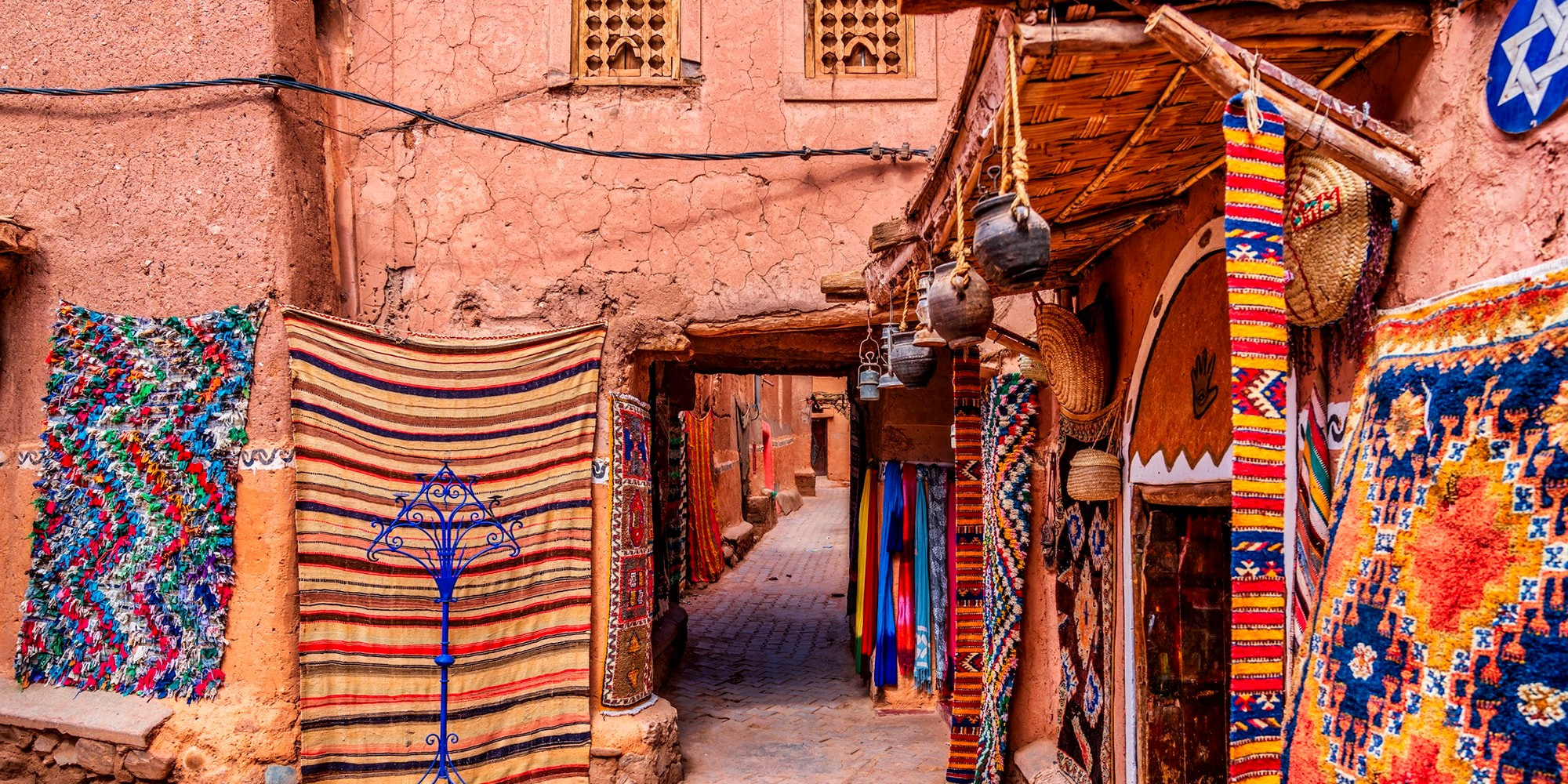
Highlights of Marrakech
-
Jemaa el-Fnaa Square: The heart of Marrakech's medina (old city), this bustling square is alive with storytellers, musicians, snake charmers, and food stalls, especially vibrant at night. It's a UNESCO Masterpiece of the Oral and Intangible Heritage of Humanity.
-
Koutoubia Mosque: Dominating the Marrakech skyline, the Koutoubia Mosque is known for its magnificent minaret, standing at 77 metres tall. While non-Muslims may not enter, its architecture and the surrounding gardens are worth admiring.
-
Bahia Palace: A masterpiece of Moroccan architecture, the Bahia Palace features stunning gardens, beautiful tile work, and intricate ceilings, offering a glimpse into the opulent life of the Moroccan nobility.
-
Saadian Tombs: Rediscovered in 1917, the Saadian Tombs are a beautiful example of Islamic architecture, with the mausoleum featuring intricate tilework and Arabic inscriptions.
-
Majorelle Garden: This enchanting garden, created by French painter Jacques Majorelle and later owned by Yves Saint Laurent, is a peaceful oasis in the city, famous for its cobalt blue accents and exotic plants.
Cultural Experience
-
Souks of Marrakech: The city's markets are a sensory overload, with spices, textiles, pottery, and jewelry. Navigating the souks is an adventure in itself, offering insight into the traditional Moroccan way of life.
-
Moroccan Cuisine: Marrakech is a culinary delight, offering everything from street food in Jemaa el-Fnaa to high-end Moroccan cuisine in its many riads. Don't miss trying a traditional tagine or enjoying mint tea in a local café.
Practical Tips for Visitors
-
Navigating the Medina: The Medina of Marrakech is a labyrinth of narrow alleys. It's easy to get lost, so consider hiring a local guide or using a reliable map or GPS app on your smartphone.
-
Bargaining: When shopping in the souks, bargaining is expected. Start at about half the asking price and negotiate with a smile.
-
Respect Local Customs: Dress modestly when exploring Marrakech, especially in the medina and when visiting religious sites.
Marrakech represents the essence of Morocco's past and its dynamic present. Whether exploring ancient palaces, wandering through lush gardens, or enjoying the lively atmosphere of its squares and markets, Marrakech offers an unforgettable experience that captivates the senses and immerses visitors in the richness of Moroccan culture.
Meknes
Meknes, one of Morocco's four imperial cities, is often overshadowed by its more famous neighbours, Marrakech and Fez, yet it holds a charm and historical depth that demand exploration. Founded in the 11th century and reaching its zenith under the rule of Sultan Moulay Ismail in the late 17th and early 18th centuries, Meknes is a city where Moroccan history, architecture, and culture converge in a remarkably preserved urban landscape.
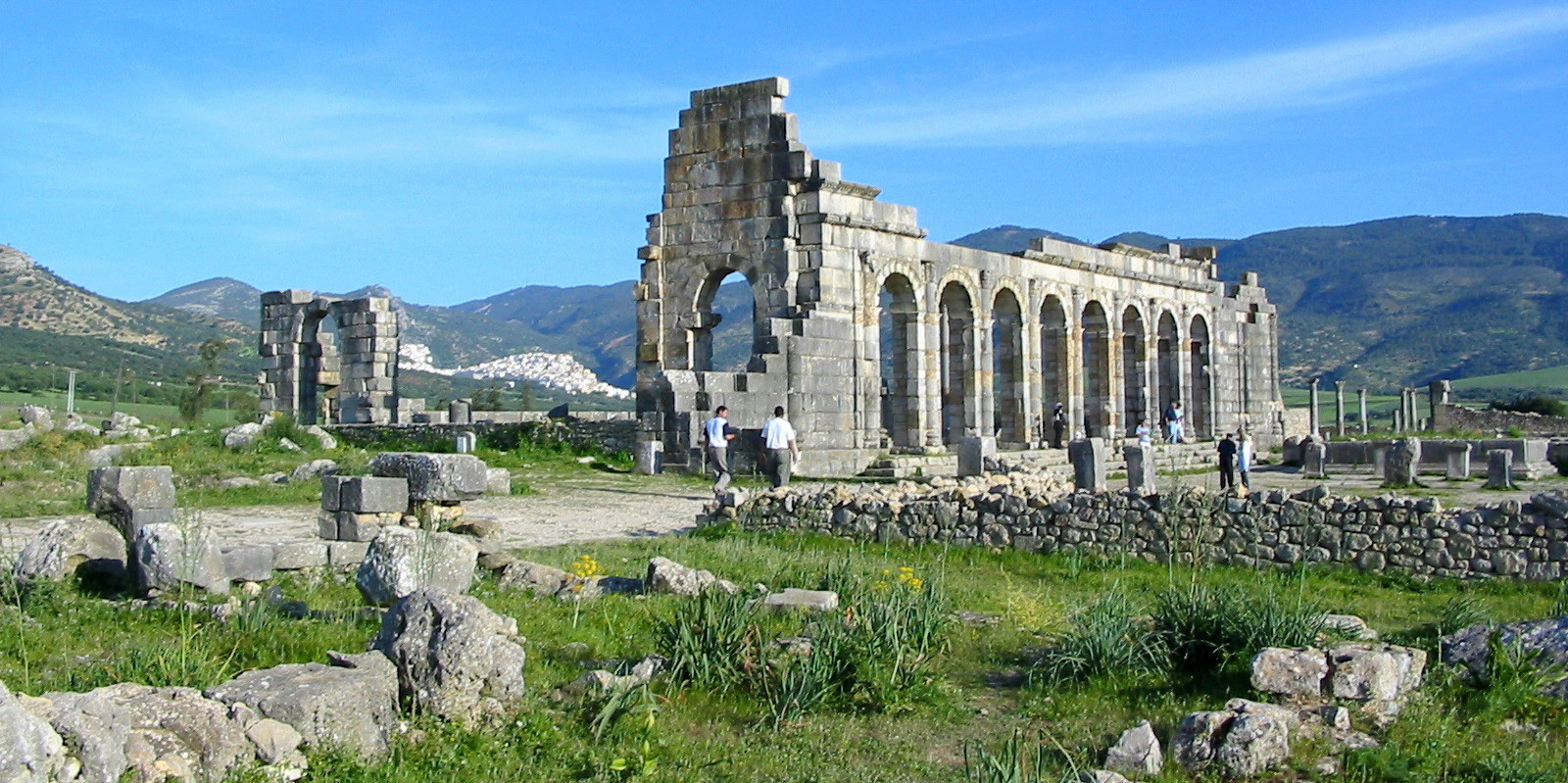
Highlights of Meknes
-
Bab Mansour: This majestic gate, adorned with impressive zellij (mosaic tilework) and intricate woodwork, serves as the grand entrance to the old city and is one of the most beautiful gates in Morocco.
-
Mausoleum of Moulay Ismail: Built to honour one of Morocco’s greatest rulers, this site, with its stunning interiors, including zellij, carved stucco, and cedar woodwork, is one of the few religious sites in Morocco open to non-Muslim visitors.
-
Royal Stables and Granaries (Heri es-Souani): Sultan Moulay Ismail’s visionary project to house 12,000 horses, this massive complex showcases the sultan's grand ambitions and is an architectural marvel in its own right.
-
Medina of Meknes: Less crowded than those of Fez and Marrakech, the medina in Meknes offers a more relaxed atmosphere to explore Moroccan life, with souks selling everything from spices to beautifully crafted metalwork.
-
Dar Jamai Museum: This museum, housed in a 19th-century palace, showcases Moroccan arts, including textiles, ceramics, and jewelry, providing insights into the country's rich cultural heritage.
Cultural Experience
Meknes is renowned for its relaxed pace of life compared to other Moroccan cities, offering visitors a more intimate glimpse into the daily rhythms of Moroccan culture. The city's markets are bustling yet accessible, offering a chance to engage with locals in a more laid-back setting. Culinary explorers will find Meknes to be a treasure trove of authentic Moroccan cuisine, from street food to sophisticated traditional restaurants housed in beautiful old riads.
Practical Tips for Visitors
-
Getting Around: Meknes is more compact than its larger counterparts, making it an ideal city to explore on foot. Public transportation and taxis are also readily available for longer distances.
-
Visiting Sites: While many of Meknes’s historical sites are open to the public, it’s worth checking opening hours in advance, as they can vary. Hiring a local guide can enhance your visit, offering deeper insights into the city's history and culture.
-
Day Trips: Consider using Meknes as a base for day trips to nearby attractions, such as the ancient Roman ruins of Volubilis or the pilgrimage town of Moulay Idriss Zerhoun, both of which offer a further glimpse into the region’s rich history.
Meknes’s blend of historical grandeur and laid-back charm makes it a captivating destination for those looking to dive deeper into Morocco’s imperial past without the hustle and bustle of the larger cities. Its well-preserved sites and welcoming atmosphere provide a unique opportunity to experience the essence of Moroccan heritage and tranquilly.
Rabat
Rabat, the capital city of Morocco, seamlessly blends the country's rich history with its progressive future. Situated along the Atlantic coastline, Rabat is distinguished by its beautiful blend of Islamic and French-colonial heritage, serene beachfronts, and vibrant cultural scene. As one of the four imperial cities of Morocco, alongside Fez, Marrakech, and Meknes, Rabat holds a unique place as the political and administrative heart of the nation while maintaining a deeply rooted connection to its historical past.
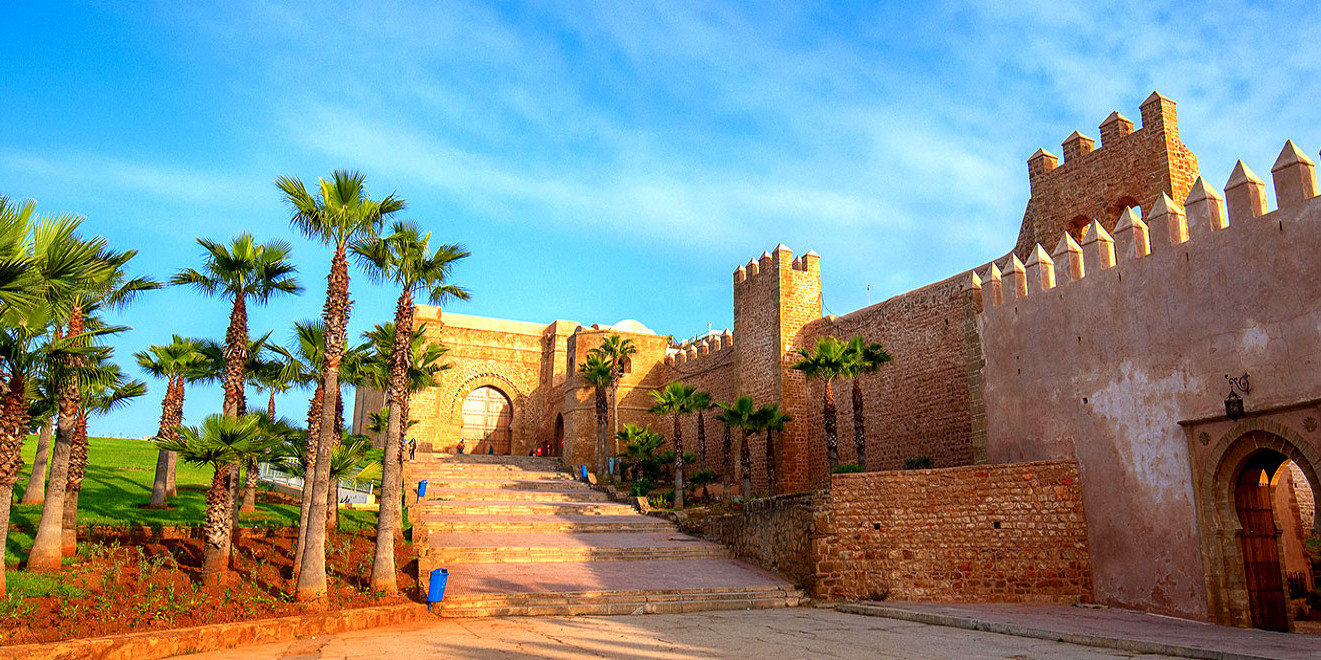
Highlights of Rabat
-
Kasbah of the Udayas: This fortress offers a stunning view of the Atlantic Ocean and houses a quiet, picturesque neighbourhood known for its blue and white painted walls. Inside, you'll find the Andalusian Gardens, a peaceful escape filled with orange trees, flowers, and trickling fountains.
-
Hassan Tower: The towering minaret of what was intended to be the world's largest mosque in the 12th century remains a symbol of Rabat's Islamic heritage. Alongside it, the Mausoleum of Mohammed V houses the tomb of the Moroccan king and his two sons, a site of great national reverence.
-
Chellah: A necropolis and complex of ancient Roman and Islamic ruins, Chellah offers a serene and hauntingly beautiful insight into Rabat's layered history, with storks nesting atop the ancient minarets and ruins.
-
Mohammed VI Museum of Modern and Contemporary Art: Reflecting Morocco's artistic progression, this museum showcases modern Moroccan art, bridging the gap between the country's rich historical past and its contemporary cultural landscape.
-
Royal Palace of Rabat: While entrance to the palace itself is restricted, the expansive grounds and the changing of the guard are impressive sights that highlight the importance of monarchy in Morocco.
Cultural Experience
Rabat's cultural fabric is woven from its diverse historical influences, evident in its architecture, art, and daily life. The city's medina, less crowded than those in other Moroccan cities, offers a more relaxed shopping experience where you can find crafts, jewellery, and textiles. Rabat is also known for its vibrant music and film festivals, which celebrate both Moroccan and international art forms.
Practical Tips for Visitors
-
Getting Around: Rabat is well-served by trams, making it easy and efficient to navigate the city. Walking is also a pleasure, especially in the compact medina and along the scenic riverfront.
-
Respectful Visit: As the political capital, Rabat hosts several diplomatic quarters and government buildings. It's advisable to be mindful and respectful when taking photographs in these areas.
-
Explore Beyond the City: Rabat's location makes it an excellent base for exploring nearby attractions, including the historic city of Salé, across the river, or the cool forests of the Mamora to the east.
As the seat of the Moroccan government and home to the royal family, Rabat offers a unique blend of ceremonial grandeur, historic depth, and modern-day culture. Its relatively relaxed pace compared to Morocco's other imperial cities makes it an ideal destination for those looking to immerse themselves in the country's culture without the intensity of the more tourist-centric locales. Whether you're exploring ancient ruins, enjoying contemporary art, or simply strolling along the beachfront, Rabat invites you to experience the multifaceted beauty of modern Morocco.
Casablanca
Casablanca, Morocco's largest city, is a dynamic metropolis where modernity meshes with tradition to create a vibrant, cosmopolitan experience. Unlike the historical capitals of Fez, Marrakech, Meknes, and Rabat, Casablanca is known for its groundbreaking architecture, bustling economic centers, and the famous Hassan II Mosque, which exemplifies Morocco's contemporary religious devotion. This city, immortalized by the classic Hollywood film bearing its name, offers a different facet of Moroccan life, showcasing the country's forward-looking spirit while still being deeply rooted in its rich cultural heritage.

Highlights of Casablanca
-
Hassan II Mosque: Standing partly over the Atlantic Ocean, this architectural marvel is one of the largest mosques in the world and one of the few open to non-Muslim visitors in Morocco. Its minaret, the tallest in the world, and the intricate craftsmanship of its interiors are a testament to contemporary Islamic architecture.
-
Morocco Mall: One of Africa's largest shopping centers, the Morocco Mall offers a glimpse into the modern lifestyle of Casablanca's residents, with a mix of international and local brands, entertainment options, and dining experiences.
-
The Corniche: This beachfront district is a popular spot for both locals and tourists, offering cafes, clubs, and pools, along with scenic views of the Atlantic Ocean. It's a perfect place to unwind and soak up the city's laid-back side.
-
Habous Quarter: Also known as the New Medina, the Habous Quarter blends traditional Moroccan design with French colonial architecture, creating a unique space where visitors can explore artisan shops, spice markets, and traditional bakeries.
-
Art Deco District: Casablanca's city centre boasts one of the largest collections of Art Deco buildings in the world, a remnant of the French colonial era. A walk through this district reveals the city's historical layers and architectural evolution.
Cultural Experience
Casablanca is a culinary haven, offering everything from high-end restaurants serving international cuisine to local eateries featuring traditional Moroccan dishes. The city's diversity is also reflected in its cultural festivals and art exhibitions, which celebrate both Moroccan traditions and global influences.
Practical Tips for Visitors
-
Getting Around: Casablanca's size and busyness make it a city best navigated by taxi or public transportation, including a modern tram system that connects key parts of the city.
-
Respecting Local Customs: While Casablanca is more liberal than some of Morocco's other cities, dressing modestly is still appreciated, especially when visiting religious sites.
-
Exploring Beyond the City: For those looking to explore beyond Casablanca, nearby attractions include the picturesque town of El Jadida and the capital, Rabat, both easily accessible by train.
Casablanca offers a unique blend of Moroccan culture and modernity, making it an essential stop for travellers seeking to experience the full spectrum of Moroccan life. From its architectural wonders and bustling markets to its oceanfront leisure and vibrant nightlife, Casablanca is a city that pulses with energy and invites exploration.
Tips for Exploring the Imperial Cities of Morocco
Exploring the Imperial Cities of Morocco—Fez, Marrakech, Meknes, and Rabat—offers a fascinating glimpse into the heart and soul of Moroccan culture, history, and architecture. Each city boasts its unique charm and treasures, providing travellers with an unforgettable journey. To make the most of your exploration, here are some essential tips:
Plan Your Itinerary Wisely
-
Prioritize Sites: Each city is rich in attractions, so prioritise according to your interests. Consider dedicating more time to larger cities like Fez and Marrakech, which are dense with historical sites.
-
Allocate Enough Time: Rushing through these cities can mean missing out on the subtle details that make them special. Allow yourself at least two to three days per city to truly soak in their essence.
Respect Local Customs and Culture
-
Dress Modestly: Especially when visiting mosques and religious sites. Covering shoulders and knees is recommended for both men and women.
-
Learn Basic Arabic or French Phrases: While many Moroccans speak English, especially in tourist areas, knowing basic greetings in Arabic or French can go a long way in showing respect and may enrich your interactions.
Stay Safe
-
Be Mindful of Your Belongings: Like in any tourist destination, it's important to be cautious with your personal belongings in crowded places.
-
Follow Local Advice: Heed advice from your accommodation hosts or local friends about areas to avoid, especially after dark.
Navigate Like a Pro
-
Use Local Guides: Especially in the medinas of Fez and Marrakech, a local guide can enhance your understanding of the history and culture, ensuring you don't miss hidden gems.
-
Understand Public Transportation: Familiarize yourself with the transportation options in each city. Trains are a comfortable and efficient way to travel between cities, while taxis and city buses are good for shorter distances within the cities.
Embrace the Culinary Landscape
-
Try Local Delicacies: Moroccan cuisine is rich and varied. Don't miss traditional dishes like tagine, couscous, pastilla, and mint tea.
-
Street Food: Sampling street food, especially in Jemaa el-Fnaa in Marrakech, offers a taste of the local flavor. Just make sure to choose stalls that are busy and where the food is prepared fresh.
Shopping and Bargaining
-
Bargain Wisely: Bargaining is part of the shopping experience in Morocco. It's expected in souks and markets but do so respectfully.
-
Appreciate Craftsmanship: Morocco is renowned for its artisanal crafts, including ceramics, leather goods, and textiles. Purchasing from local artisans not only provides you with a unique souvenir but also supports the local economy.
Be Open and Respectful
-
Cultural Sensitivity: Morocco is a Muslim country, and showing respect towards its religious practices and traditions will enhance your experience and interactions with locals.
-
Photography Etiquette: Always ask for permission before taking photos of people, especially in more traditional areas.
By following these tips, you're set to have a rich and rewarding journey through the Imperial Cities of Morocco. Each city offers a unique window into the country's past and present, promising an adventure filled with discovery and wonder.
Best Time for Exploring the Imperial Cities of Morocco
The best time for exploring the Imperial Cities of Morocco—Fez, Marrakech, Meknes, and Rabat—is during the spring (March to May) and fall (September to November) seasons. These periods offer the most pleasant weather conditions for touring, avoiding the extreme heat of the summer months and the cooler, potentially rainy days of winter. Here's what makes these seasons ideal for your Moroccan adventure:
Spring (March to May)
-
Mild Weather: Spring brings mild temperatures, with daytime highs comfortable for walking and sightseeing. The evenings can be cool, so packing layers is advisable.
-
Landscape in Bloom: The countryside is particularly beautiful during spring, with landscapes coming to life and flowers blooming, making it a picturesque time to explore not only the cities but also the surrounding areas.
-
Cultural Festivals: Spring hosts several cultural events and festivals, providing a deeper insight into Moroccan traditions and celebrations.
Fall (September to November)
-
Pleasant Temperatures: Similar to spring, the fall season offers comfortable weather for exploring the narrow streets of the medinas and enjoying outdoor cafes. The heat of summer dissipates, leaving behind warm days and cool evenings.
-
Lower Tourist Crowds: After the peak summer tourist season, the fall months see fewer visitors, making it an ideal time to explore more quietly and enjoy a more authentic experience.
-
Agricultural Harvests: This time of year is harvest season for many crops, including dates, which are celebrated in several regions. It’s an excellent opportunity to experience Morocco’s rich agricultural traditions.
Things to Consider
-
Ramadan: If your travel dates fall during Ramadan, the Islamic month of fasting, be aware that daily rhythms in the cities may change. Many shops and restaurants close during the day and reopen after sunset. It's a unique time to experience Morocco's cultural and religious practices, but it requires some planning and flexibility.
-
Accommodation and Flights: During these ideal travel seasons, it’s wise to book your accommodations and flights well in advance, as prices can rise, and availability may become limited due to the increased demand.
Regardless of when you choose to visit, the Imperial Cities of Morocco offer a timeless journey through the country's rich history, vibrant culture, and stunning architecture. Spring and fall simply provide the added benefit of more comfortable weather conditions, making your exploration of the ancient medinas, majestic palaces, and bustling souks even more enjoyable.
Exploring the Imperial Cities of Morocco—Fez, Marrakech, Meknes, and Rabat—unveils a captivating blend of history, culture, and architectural marvels, each city offering a unique insight into Morocco's rich heritage. From the labyrinthine alleys of Fez to the vibrant squares of Marrakech, the imperial elegance of Meknes, and the tranquil beauty of Rabat, these cities are the heart and soul of Morocco. The ideal times to visit, during spring and fall, provide pleasant weather, enhancing your experience of the ancient medinas, majestic palaces, and bustling markets. However, the allure of Morocco's Imperial Cities transcends seasons, promising unforgettable adventures and memories. In essence, this journey is not just a trip through Morocco's past and present but an invitation to immerse yourself in the vibrant tapestry of Moroccan life, making every moment spent here truly extraordinary.
FAQs for Exploring the Imperial Cities of Morocco
Q: What are the Imperial Cities of Morocco?
A: The Imperial Cities of Morocco are Fez, Marrakech, Meknes, and Rabat, each known for its historical significance, cultural heritage, and architectural beauty, having served as the capital at different times.
Q: When is the best time to visit the Imperial Cities?
A: The ideal times to visit are during the spring (March to May) and fall (September to November), when the weather is mild, making it pleasant for exploration.
Q: Do I need a guide to explore the Imperial Cities?
A: While not mandatory, hiring a local guide can greatly enhance your understanding and enjoyment by providing insights into each city's culture, history, and hidden gems.
Q: What should I wear when visiting the Imperial Cities?
A: Dress modestly to respect local customs, especially at religious sites. Covering shoulders and knees is recommended for both genders.
Q: Can I visit the mosques in the Imperial Cities?
A: Most mosques in Morocco do not allow non-Muslim visitors inside, except for the Hassan II Mosque in Casablanca, which is open to tourists.
Q: What are some must-try foods in the Imperial Cities?
A: Essential Moroccan dishes include tagine, couscous, pastilla, harira, and mint tea. Street food is also a great way to experience local flavours.
Q: Is it safe to travel in the Imperial Cities?
A: Yes, the Imperial Cities are generally safe for travellers, but it's wise to be cautious with personal belongings and aware of your surroundings in crowded places.
Q: How do I get around the Imperial Cities?
A: Walking is best for exploring the medinas. Taxis are available for longer distances within cities, and trains or buses are good options for intercity travel.
Q: What are some tips for bargaining in the souks?
A: Start negotiating at half the asking price and be prepared to walk away if necessary. Bargaining is a traditional part of the shopping experience.
Q: How can I respect local customs and traditions while visiting?
A: Learn basic Arabic or French phrases, dress modestly, ask permission before taking photos of people, and show respect for religious practices and traditions.
For the Nepal tour, please click here.
If you are looking for different kinds of Nepal Tours or Trekking Packages, feel free to contact us.
